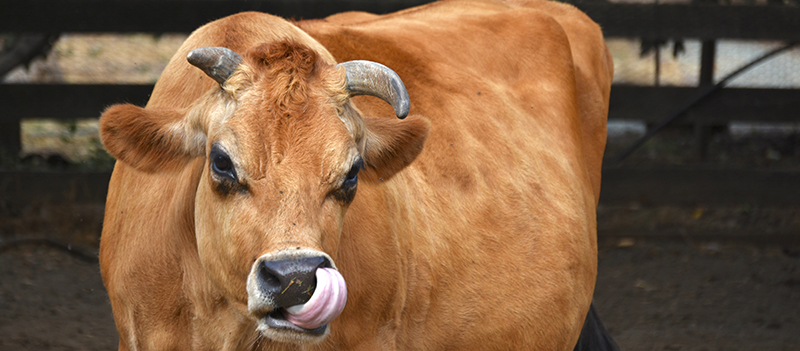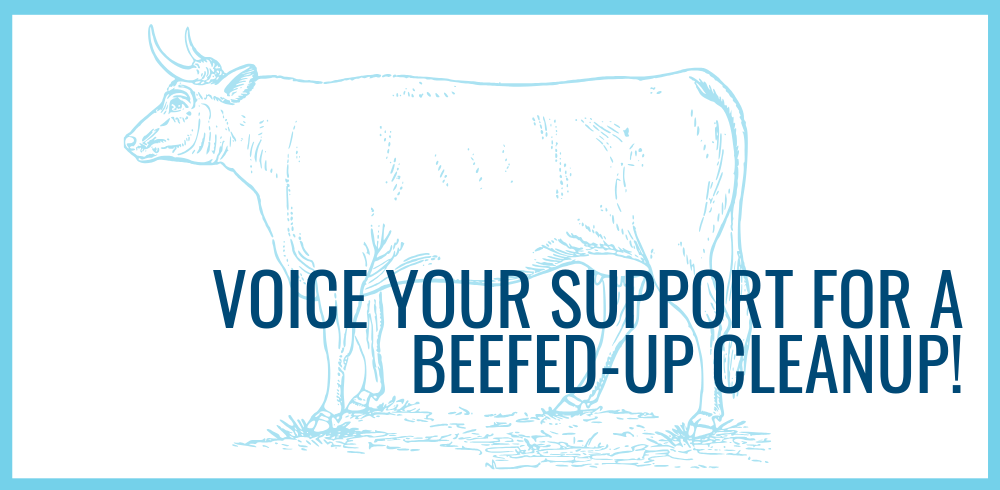How Virginia’s Cleanup Plan Tackles Agricultural Runoff
As we covered in our first blog post, we’re in the home stretch of the Chesapeake Bay Cleanup — the multistate effort to reduce pollution and restore clean water to the Bay and all of its tributaries. Virginia has until 2025 to put in place 100% of the measures necessary to meet our pollution diet and reach our goal. We need a strong plan for success, and that is what we’re aiming for in the newly drafted Phase III Watershed Implementation Plan — a.k.a. the WIP.
So let’s do the cow-culus on how the draft WIP gets us to 100% by 2025.

First up, Virginia’s Number 1 industry: Agriculture. We’ve known for a long time that reducing polluted agricultural run-off is a must. Farms are a major source of the nitrogen, phosphorus, and sediment making its way to the Bay. Fortunately, reducing agricultural runoff is cost-effective and it comes with great co-benefits, like keeping bacteria out of local waterways. That’s important for folks who rely on headwater streams for safe drinking water, healthy sportfish stocks, or a stress-relieving paddle on a gorgeous Spring day.
There are over 83,000 farm operations across the watershed producing more than 50 different commodities. Treating agricultural runoff makes sense, but it’s still a big lift. When we ask them to help us protect clean water, we have to provide them with the support and the know-how to get it done.
Virginia’s Agricultural Cost-Share Program (VACS) started in 1984 and encourages farmers to install best management practices, or BMPs, on their lands by offering to help cover the cost. But after more than 35 years, we’ve run out of the low-hanging fruit! So to get us the rest of the way to meeting our agricultural cleanup goals, we need to buckle down and get creative. Which may explain why the WIP includes 23 different initiatives to help tackle agricultural runoff. Before you reach for the calf-feine, don’t worry. We’re sticking to the prime cuts.
Here’s how the draft WIP hits the bullseye for Virginia’s farms:
Put up the cash.
We’ll need strong, reliable funding for programs like VACS to get enough BMPs in the ground by 2025. And we’ll need to invest in technical assistance so that someone is there to help farmers know what to do when they go to bat for the Bay.
Get the most bang for our buck.
We’re working with limited resources, and we’re on the clock. But here’s the good news. We know which regions of the state are going to deliver the biggest farm pollution reductions by 2025, and we’ve figured out which BMPs do best in those areas. So let’s put our dollars where they will go farther.
Take credit where credit’s due.
A lot of Virginia farmers are already doing good things. They’ve voluntarily put in place BMPs that are keeping pollution out of their local waterways. But we haven’t done a great job of keeping track of where they are and what they’re doing. Let’s fix that.
Keep the fertilizer on the fields.
Our food needs food to grow. But the same nutrients that fertilize our crops — nitrogen and phosphorus — are the same pollutants that hurt our waterways. Nutrient management plans help farmers test their soil and apply what they need when they need it so that the nutrients stay on their fields and out of our water. The WIP aims for nutrient management plans on every acre of cropland, and calls on bigger farms to step up if we start to fall behind.
Give streams some space.
You know when you’re trying to watch something on YouTube, but buffering just slows…everything…down? Buffers – great for streams, terrible for cat videos. A buffer between farmland and streambanks allows stormwater to slow down (like those download speeds) and leave excess nutrients behind. At JRA, we’re all-in on riparian buffers! And we’re always looking for volunteers to help us plant trees.
Corral the cows.
Mooove over, Elsie. Streams are a no-cow zone. Fencing cows out of streambeds prevents erosion and keeps bacteria out of our water. Plus, it keeps those hooves healthy, reducing vet visits. The WIP calls for excluding livestock from every year-round stream in the Bay watershed. It’s an expensive lift, but an essential one — and Virginia’s considering making it mandatory.
These are strong goals that put us on the path to success by 2025. You can help us defend them. Tell DEQ you support a beefed-up Cleanup with strong incentives to help farmers protect clean water!

